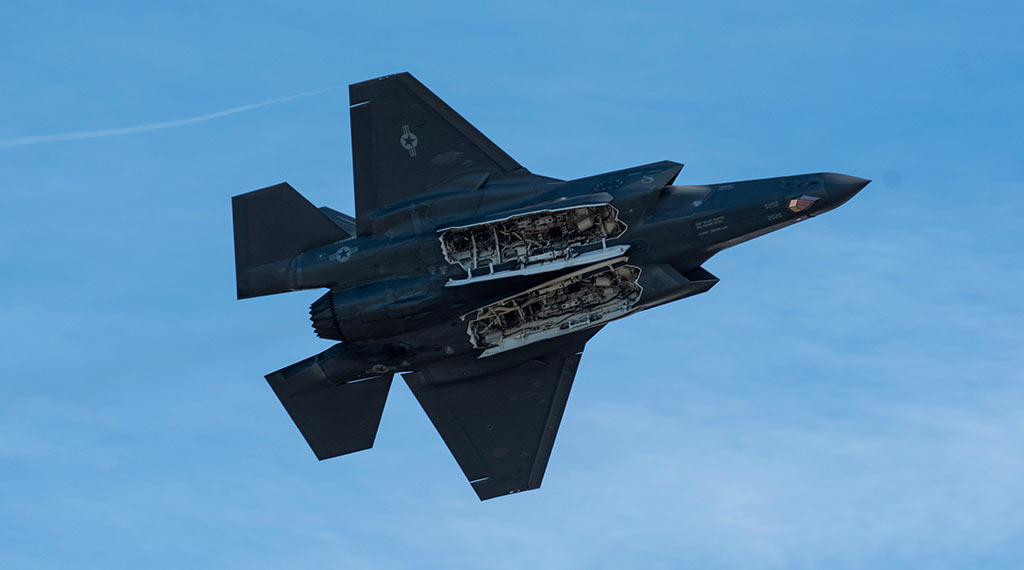
Editor’s Note: Mark Levin extensively quoted this piece in his June 2 podcast.
Over the years, Israeli military officials have hinted at the country’s ability to strike Iran’s nuclear facilities if necessary. The Jewish state has led successful operations in the past, striking nuclear facilities in Iraq in 1981 and Syria in 2007. While Iraq and Syria are closely positioned to Israel, Iran is nearly 1,000 miles away. The distance between Israel and Iran remains the most challenging obstacle for this type of operation. However, Israel’s arsenal of long-range fighters and its potentially nuclear-capable intermediate-range ballistic missile would lead to an effective operation.
Assessing the Situation
In February, the Israeli government estimated that the Islamic Republic of Iran was merely 4 to 6 months away from achieving nuclear breakout status. The Jewish state sent a delegation to the ongoing joint U.S.-Iranian Vienna negotiations to express concern that a return to the Joint Comprehensive Plan of Action (JCPOA) would fail to distance the regime from its nuclear breakout time while simultaneously allowing the transfer of arms and weapons to its proxies undeterred. While the negotiations’ progress has stalled, U.S. officials sped up the regime’s potential breakout time to “a few weeks away.” Iran’s rapid expansion of uranium, a litany of compliance failures, and increasingly threatening rhetoric have both the U.S. and Israel worried.
Earlier this month, the Israel Defense Forces (IDF) launched the largest military drills in the country’s history, dubbed “Chariots of Fire.” As part of this planned simulation, Israel’s Air Force practiced taking out Iran’s nuclear sites. If Israel would strike Iran in the future, the Natanz uranium site would be the premier target. This complex is around 600,000 square feet and is dug nearly 23 feet below the ground, covered by several layers of metal and concrete. Surrounded by surface-to-air missiles, the complex would be challenging to target.
Fighter Jets at the Ready
The Israeli Air Force’s arsenal of F-15I Ra’am, F-16I Sufa, and F-35I Adir fighter jets would be capable of targeting Iran’s Natanz facility. With a combat radius of over 1,000 miles, the F-16 Sufas would be able to operate a long-range mission. Israel’s fleet of 25 F-15 Ra’ams has a combat range of over 2,000 miles. In 1981, the IAF launched the “Operation Opera” attack that destroyed a nuclear reactor located south of Baghdad. A squadron of eight F-16As equipped with two unguided Mark-84 2,000 pound delay-action bombs carried out the successful strike. While Syria is a closer destination to Israel than Iran, the IDF’s fleet of fighters is likely up to the challenge.
In addition to its fleet of jets, Israel’s Jericho 3 missile reportedly can carry nuclear warheads and has an estimated range of 4,000-6,000 kilometers. This weapon would easily reach Iranian territory and would certainly be included in any plans the IDF puts forward to strike out the Natanz facility. The missile has a reported payload of 1,000-1,300 kilograms and is possibly equipped with a 750kg nuclear warhead. Although the Jericho’s true capabilities are kept under wraps due to Israel’s policy of nuclear opacity, the potentiality of its existence poses a significant threat to Iran and tool for the IDF.
- DF-21D: China built this missile to sink US Navy aircraft carriers - April 24, 2024
- The US Navy faces a new crisis: Years of delays expected for new warships - April 23, 2024
- The secret reason the age of the aircraft carrier is over - April 22, 2024
